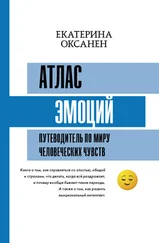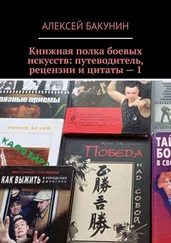Jordan N., Trimble T.: Is the use of auras and chakras in New Age practices related to synaesthetic experience? The Irish Psychologist 2008, 75–80.
Faw B.: Conflicting intuitions may be based on differing abilities: evidence from mental imaging research . J Conscious Stud 2009, 16 (4): 45–68.
Galton F.: Statistics of mental imagery . Mind 1880, 5: 301–18.
Zeman A. et al.: Lives without imagery – congenital aphantasia . Cortex 2015, 73: 378–380.
Zeman A. Z. et al.: Loss of imagery phenomenology with intact visuo-spatial task performance: a case of “blind imagination” . Neuropsychologia 2010, 48 (1): 145–155.
Zeman A. et al.: Lives without imagery – congenital aphantasia . Cortex 2015, 73: 378–380.
Ross B.: Aphantasia: how it feels to be blind in your mind. 2016. www.facebook.com/notes/blake-ross/aphantasia-how-it-feels-to-be-blind-in-your-mind/10156834777480504
Pearson J. et al.: The functional impact of mental imagery on conscious perception . Curr Biol 2008, 18 (13): 982–986.
Pearson J. et al.: Evaluating the mind’s eye: the metacognition of visual imagery . Psychol Sci 2011, 22 (12): 1535–1542.
van Leeuwen C.: What makes you think you are conscious? An agnosticist manifesto . Front Hum Neurosci 2015, 9: 170.
“Удивительные люди”. Борис Голик. Человек-магнитофон. www.youtube.com/watch?v=B4MBBaW3xUM
Carr M. F. et al.: Hippocampal replay in the awake state: a potential substrate for memory consolidation and retrieval . Nat Neurosci 2011, 14 (2): 147–153.
Inoue S., Matsuzawa T.: Working memory of numerals in chimpanzees . Curr Biol 2007, 17 (23): R1004–1005.
Counting monkeys. www.youtube.com/watch?v=VM5QS_adrIQ
Nakagaki T. et al.: Maze-solving by an amoeboid organism . Nature 2000, 407 (6803): 470. Slime mold Physarum finds the shortest path in a maze. www.youtube.com/watch?v=czk4xgdhdY4
Saigusa T. et al.: Amoebae anticipate periodic events . Phys Rev Lett 2008, 100 (1): 018101.
Tero A. et al.: Rules for biologically inspired adaptive network design . Science 2010, 327 (5964): 439–442.
Перевод В. Неделина.
Munz P. et al.: When zombies attack! Mathematical modeling of an outbreak of zombie infection . In Tchuenche J. M., Chiyaka C. (Eds.): Infectious Disease Modelling Research Progress. 2009.
Pierre-Louis P.: Code pénal: promulgué le 11 août 1835 / mis á jour et annoté par Patrick Pierre-Louis, Professeur à l’Université d’État . 2011.
Guha A.: Does the Haitian Criminal Code outlaw making zombies? 2014. https://blogs.loc.gov/law/2014/10/does-the-haitian-criminal-code-outlaw-making-zombies
Littlewood R., Douyon C.: Clinical findings in three cases of zombification . Lancet 1997, 350 (9084): 1094–1096.
Davis E. W.: The ethnobiology of the Haitian zombi . J Ethnopharmacol 1983, 9 (1): 85–104.
Homaira N. et al.: Multiple outbreaks of puffer fish intoxication in Bangladesh, 2008. Am J Trop Med Hyg 2010, 83 (2): 440–444.
Yasumoto T., Kao C. Y.: Tetrodotoxin and the Haitian zombie . Toxicon 1986, 24 (8): 747–749.
Freye E.: Toxicity of Datura Stramonium . In Freye E., Levy J. V. Pharmacology and Abuse of Cocaine, Amphetamines, Ecstasy and Related Designer Drugs . 2009.
Bane V. et al.: Tetrodotoxin: chemistry, toxicity, source, distribution and detection . Toxins (Basel) 2014, 6 (2): 693–755.
Manga-Gonzalez M. Y. et al.: Contributions to and review of dicrocoeliosis, with special reference to the intermediate hosts of Dicrocoelium dendriticum . Parasitology 2001, 123 Suppl: S91–114.
Poulin R.: Parasite manipulation of host behavior: an update and frequently asked questions . Advances in the Study of Behaviour. 2010, 41: 151–186.
Andersen S., Hughes D.: Host specificity of parasite manipulation: zombie ant death location in Thailand vs. Brazil . Commun Integr Biol 2012, 5 (2): 163–165.
Poinar G. Jr., Yanoviak S. P.: Myrmeconema neotropicum n. g., n. sp., a new tetradonematid nematode parasitising South American populations of Cephalotes atratus (Hymenoptera: Formicidae), with the discovery of an apparent parasite-induced host morph . Syst Parasitol 2008, 69 (2): 145–153.
Biron D. G. et al.: Behavioural manipulation in a grasshopper harbouring hairworm: a proteomics approach . Proc Biol Sci 2005, 272 (1577): 2117–2126.
Sanchez M. I. et al.: High prevalence of cestodes in Artemia spp. throughout the annual cycle: relationship with abundance of avian final hosts . Parasitol Res 2013, 112 (5): 1913–1923.
Kristensen T. et al.: The selective advantage of host feminization: a case study of the green crab Carcinus maenas and the parasitic barnacle Sacculina carcini . Mar Biol 2012, 159 (9): 2015–2023.
Grosman A. H. et al.: Parasitoid increases survival of its pupae by inducing hosts to fight predators . PLoS One 2008, 3 (6): e2276.
Body invaders. National Geographic. www.youtube.com/watch?v=vMG-LWyNcAs
Tanaka S., Ohsaki N.: Behavioral manipulation of host caterpillars by the primary parasitoid wasp Cotesia glomerata (L.) to construct defensive webs against hyperparasitism . Ecol Res 2006, 21 (4): 570–577.
Eberhard W. G.: Spider manipulation by a wasp larva . Nature 2000, 406 (6793): 255–256.
Gal R. et al.: Parasitoid wasp uses a venom cocktail injected into the brain to manipulate the behavior and metabolism of its cockroach prey . Arch Insect Biochem Physiol 2005, 60 (4): 198–208.
Ingwell L. L. et al.: Plant viruses alter insect behavior to enhance their spread . Sci Rep 2012, 2: 578.
Moreno-Delafuente A. et al.: A plant virus manipulates the behavior of its whitefly vector to enhance its transmission efficiency and spread . PLoS One 2013, 8 (4): e61543.
Tain L. et al.: Differential influence of Pomphorhynchus laevis (Acanthocephala) on brain serotonergic activity in two congeneric host species . Biol Lett 2007, 3 (1): 68–71.
Guler Y., Ford A. T.: Anti-depressants make amphipods see the light . Aquat Toxicol 2010, 99 (3): 397–404.
Читать дальше
Конец ознакомительного отрывка
Купить книгу
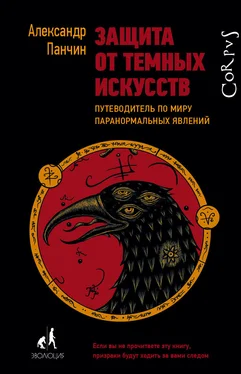
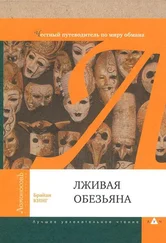


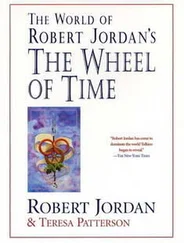

![Александр Панчин - Гарвардский Некромант [litres]](/books/390749/aleksandr-panchin-garvardskij-nekromant-litres-thumb.webp)


